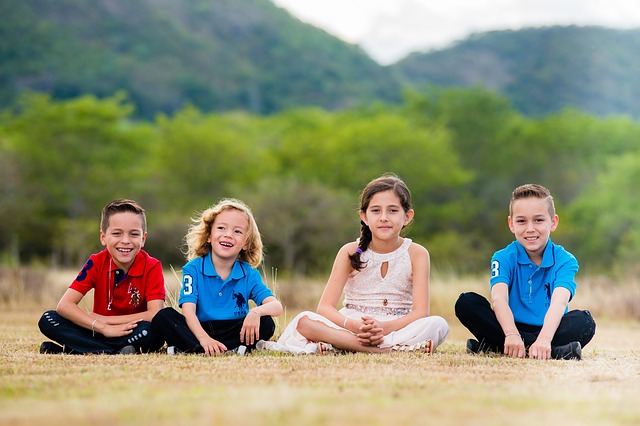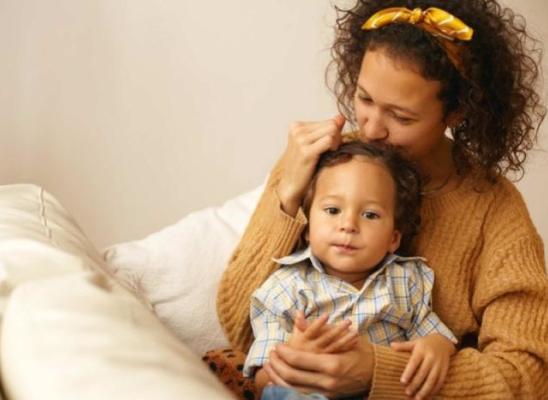Kids Who Pull – Insights into Pulling Behaviors

Online test
Find out the severity of your symptoms with this free online test

Image by Ben Scherjon from Pixabay
Although most people with trichotillomania report age of onset somewhere in their early teens or adolescent years, some people begin compulsive pulling in childhood. Since most research on trich and corresponding treatments targets adults, there are not many studies to reveal information about pulling behaviors in children. However, a recently published study examined the connections between pulling styles, pulling cues, and sensation seeking in children which raises some interesting questions about trich in children.
Theories About Pulling Styles
There are several perspectives from which to view trichotillomania, and this research looks at compulsive hair pulling from three views. The first is that hair-pulling acts as stimulus regulation. The premise of Dr. Fred Penzel’s Stimulus Regulation Model of Trichotillomania is further explained in this blog post, but the main idea is that people pull as a way to regulate sensations. When feeling overstimulated, a person may pull for its calming effect while those who feel understimulated may pull to feel sensations. In other words, pulling can regulate the nervous system. Work in the occupational therapy field on sensory processing supports complements this idea. Everyone has a neurological threshold at which the brain detects stimuli as well as a threshold for feeling overwhelmed by that stimuli. In occupational therapy, the goal is to create balance with stimulation levels and what a person needs to adapt to the environment. This relates to the Stimulus Regulation Model because someone with a high neurological threshold will tend to seek out sensations through behavior while those with low thresholds will engage in behaviors that avoid the sensations.
Another perspective related to trich that requires an explanation for the results to make sense is the classification of pulling behaviors into categories. Researchers classify behaviors as focused, pulling with full awareness and intention, and automatic, pulling outside of awareness and usually while bored. A common assessment used by researchers classifies a person’s behaviors as one of three types: predominantly focused, predominantly automatic, or a combination of the two. Previous research indicates those with predominantly focused behaviors usually have the highest rates of shame and anxiety along with the most severe pulling behaviors. However, that research was done with adults.
Study Results
This study looked at pulling styles, cues for pulling, and sensory processing in children ages 7-17 with the mean age of the group at 12.6. The 32 participants included 28 girls and 4 boys. Parents answered the questions based on their observations of the children. For this research, each participant was assessed for pulling styles and placed into categories. Seven children were High Focused/High Automatic (HFHA); nine were High Focused/Low Automatic (HFLA); nine were Low Focused/High Automatic (LFHA); seven were Low Focused/Low Automatic (LFLA). The distribution between the categories was fairly even which reduced the change that results would be skewed.
The participants were also evaluated for cues and sensory processing. Once all the assessment data was complete, the author looked for correlations and relationships between pulling styles, cues, and sensation seeking.
First, there was no difference in sensation seeking between the highly focused/high automatic and the low focused/high automatic styles, but the low focused/high automatic participants did show more sensation-seeking than low focused/low automatic participants. This means that people with high levels of automatic pulling behaviors, or the kind that occur while zoned out, bored, or otherwise unaware, may be engaging in sensation-seeking behaviors consistent with the stimulus regulation model of pulling which says people pull because they feel understimulated.
In regards to cues for pulling behaviors, highly focused pulling styles pulled when cued by negative emotions more so than the low focused styles. Those with high negative emotional cues also scored high on sensation avoidance showing a relationship between highly focused pulling styles, negative emotions, and sensation avoidance. The author suggested this could be because negative emotions act as a stimulus contributing to overstimulation. Also, highly automatic pulling styles tend to pull in response to sedentary cues, so when children were bored and just sitting around doing nothing, they tended to pull.
Age and Pulling Styles
This research also presented some interesting data about age and pulling styles. Within this population of 32 children, those who engaged primarily in focused pulling were older and started pulling at older ages than those with automatic behaviors. The children with mostly focused styles, reported age of onset around 11 years old, while those with automatic pulling behaviors tended to start right around 7-years-old. The author suggested this may be an indication that predominantly focused pulling styles may have more of a hormonal cause connection than predominantly automatic pulling styles.
Putting it All Together
Of course, research begets more research, and hopefully, this study will prompt more of it. Early intervention tends to have more success. However, if you are a parent, here are a few takeaways:
The age at which a child begins pulling may indicate behavior style.
While this study only had 32 participants, it remains significant that a majority of those with automatic pulling behaviors started around age 7. Therefore, if your child starts pulling around that age, they may not consciously aware they are doing it. Automatic pulling was also cued by sedentary activity, which means sitting in front of a screen or hanging out doing nothing only gives kids more opportunities to pull. Provide kids with tactile activities like art, building, crafting and perhaps those activities will satisfy their sensation-seeking needs.
For those whose pulling behaviors begin around age 11, they may be engaging in focused pulling in response to negative emotions or as a way to cope with overstimulation. It may also indicate a hormonal connection. It may help to teach kids healthy ways of coping with negative emotions, getting them to a therapist early, or considering what may be overstimulating to them.
Kids may not be able to articulate how or why they pull.
Keep in mind that many children, and even some adolescents, may not have the words to describe what they are doing when they pull or why they do it. They may not have the words to understand what they feel or what triggers them to pull. While this research helps us understand some of the relationships that exist between styles, cues, and sensations, every child is different. Listen to what they do say about it, though, and let them know they are not alone.
The best thing you can do is love them unconditionally.
Many things make your child unique and special. The onset of compulsive hair-pulling behaviors can be frightening and confusing. While you work to help your child, make a point of reminding them that they are more than their compulsive behaviors. Encourage and support them in their efforts to manage behaviors, but spend a lot of time pointing out their strengths, gifts, and talents. Most importantly, make sure they know you love them no matter what.
For the full research article, go to: https://digitalcommons.bard.edu/senproj_s2019/92
Lee, Tia Rose, "Stimulus Regulation in Pediatric Trichotillomania" (2019). Senior Projects Spring 2019. 92.
Online test
Find out the severity of your symptoms with this free online test
Start your journey with TrichStop
Take control of your life and find freedom from hair pulling through professional therapy and evidence-based behavioral techniques.
Start Now



